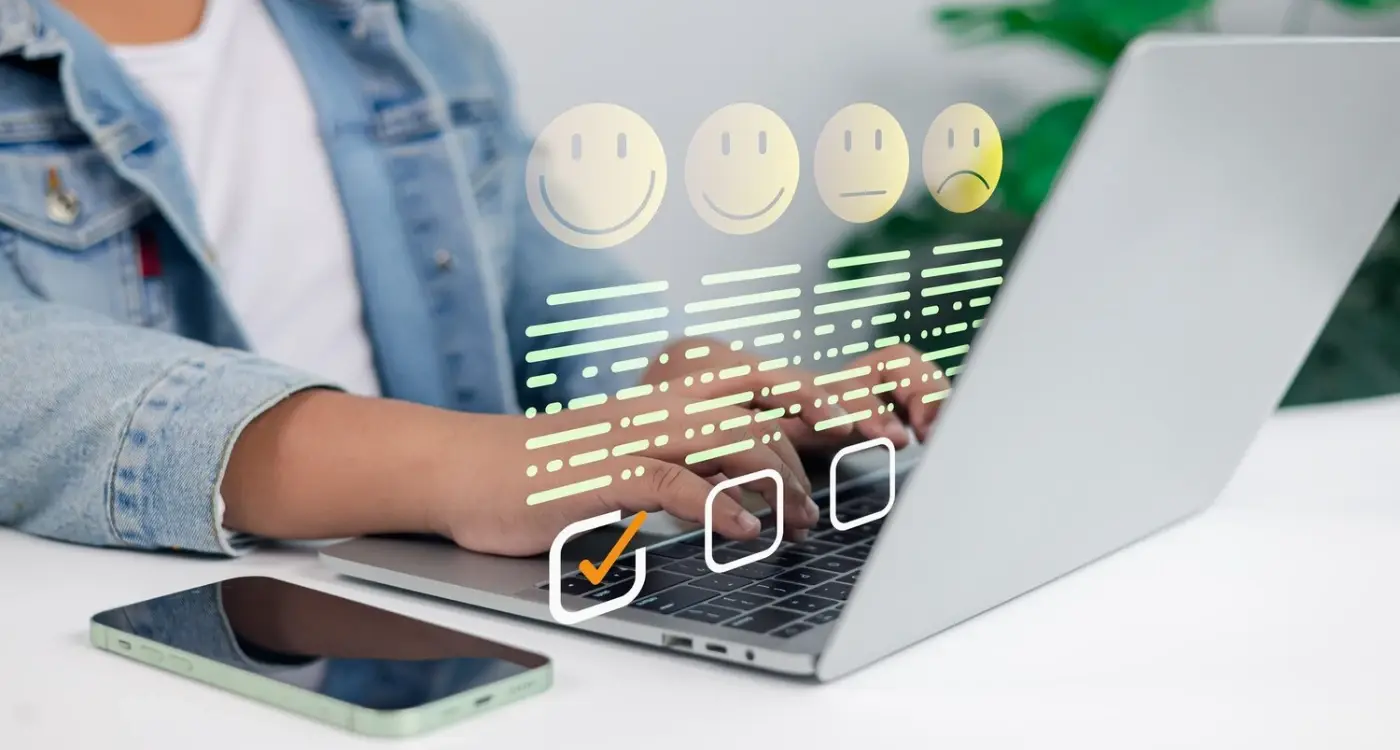What Design Trends Should I Follow (And Which Should I Avoid)?
Every month, a new mobile app UI trend sweeps through the design community like wildfire. Designers rush to implement the latest gradient styles, button shapes, or animation effects—often without stopping to ask whether these trends actually improve the user experience. The result? Apps that look trendy today but feel outdated tomorrow, leaving users confused and businesses scrambling to redesign.
This constant cycle of design fashion creates a real problem for anyone building a mobile app. Should you follow the latest UI trends to stay relevant? Or should you stick with proven design patterns that work? The answer isn't as straightforward as you might think—and getting it wrong can cost you users, money, and credibility.
The best mobile app designs don't follow trends blindly; they use trends strategically to enhance user experience while maintaining their unique identity.
Throughout this guide, we'll explore which current mobile app UI trends are worth your attention and which ones you should avoid at all costs. More importantly, we'll give you a framework for evaluating new design trends as they emerge, so you can make informed decisions that benefit both your users and your business. By the end, you'll know how to create designs that feel fresh and modern without sacrificing usability or longevity.
Understanding Design Trends vs Fashion
After working with hundreds of mobile apps over the years, I've noticed something interesting—many people confuse design trends with design fashion. They sound similar, but they're actually quite different things. Design trends are driven by real user needs and technological improvements; design fashion is more about what looks popular right now.
Think of it this way: when Apple introduced the notch on the iPhone, lots of Android manufacturers copied it. That was fashion—copying what Apple did because it seemed trendy. But when apps started using gesture navigation because touchscreens got better and people wanted more screen space, that was a trend based on real user needs.
How to Spot the Difference
Design trends usually solve actual problems or make apps easier to use. They stick around because they work well for users. Fashion trends are more about copying what successful companies do, even when it doesn't make sense for your app.
- Trends improve user experience and solve real problems
- Fashion focuses on copying popular visual styles
- Trends last longer because they're based on user needs
- Fashion changes quickly and can make apps look outdated
The key is asking yourself: does this design choice help my users complete their tasks better, or am I just following it because everyone else is? That simple question will save you from making expensive design mistakes that you'll regret later.
Current Mobile App UI Trends Worth Following
After working with countless mobile app projects over the years, I've noticed that certain UI trends actually make apps better for users—not just prettier. These aren't the flashy design fashion trends that disappear after six months; they're genuine improvements that solve real problems.
Dark mode has become absolutely everywhere, and for good reason. It reduces eye strain, saves battery life on OLED screens, and looks brilliant. Most users now expect this option, so it's worth implementing properly rather than as an afterthought.
Trends That Actually Improve User Experience
Voice interfaces and gesture navigation are changing how people interact with apps. Voice search particularly helps when users have their hands full or need quick access to information. Gesture navigation feels natural once people get used to it—swiping and tapping just makes sense.
When implementing new UI trends, always test them with real users first. What looks good in design mockups doesn't always work well in practice.
Minimalist design continues to dominate because it works. Clean layouts with plenty of white space help users focus on what matters. Micro-interactions—those tiny animations when you tap a button—add personality without overwhelming the interface.
- Dark mode and light mode options
- Voice search and commands
- Gesture-based navigation
- Minimalist, clean layouts
- Subtle micro-interactions
- Personalised content feeds
The key is choosing trends that genuinely improve your app's usability rather than just following what everyone else is doing.
Design Trends You Should Avoid
After working with hundreds of mobile apps over the years, I've seen plenty of design trends that looked brilliant at the time but aged terribly. Some trends are just plain bad for users, whilst others might look impressive but create real problems down the line.
The biggest mistake I see is following trends that prioritise style over substance. Take overly complex animations that slow down your app—they might look flashy, but they'll frustrate users who just want to get things done quickly. Similarly, those ultra-thin fonts that were everywhere a few years back? They're nightmare for accessibility and readability.
Common Trends That Hurt User Experience
- Removing all visual boundaries between elements (makes navigation confusing)
- Using only icons without text labels (users can't guess what they mean)
- Making everything bright neon colours (causes eye strain and accessibility issues)
- Hiding important features behind gesture controls (not discoverable for most users)
- Creating custom UI elements that don't follow platform standards
The worst offenders are trends that sacrifice usability for aesthetics. Your app needs to work first and look good second—not the other way around. If a design trend makes your app harder to use, it's not worth following regardless of how popular it becomes.
How to Evaluate New Design Trends
I've seen too many mobile app projects derailed by shiny new UI trends that looked amazing but made no sense for the actual users. The truth is, not every trend deserves your attention—and knowing which ones to ignore can save you months of development time and budget overruns.
When a new design fashion pops up, I always ask three questions: Does it solve a real problem? Will users understand it instantly? And can we implement it without breaking everything else? If the answer to any of these is no, it's probably worth skipping.
The Three-Month Rule
Here's something I've learned from years of app development: if a UI trend hasn't stuck around for at least three months, don't touch it. Design fashions come and go quickly, but genuine improvements to user experience tend to have staying power.
The best mobile app designs are invisible to users—they just work without drawing attention to themselves
Testing Before Committing
Before implementing any new trend, create a simple prototype and test it with real users. Watch how they interact with it; do they hesitate or get confused? Sometimes what looks brilliant on design blogs fails completely in the real world. Your users' behaviour will tell you everything you need to know about whether a trend is worth following.
Balancing Trends with User Experience
After eight years of building mobile apps, I've seen plenty of projects where designers got so caught up in the latest trends that they forgot about the people actually using the app. Don't get me wrong—trends can be brilliant when used properly, but they should never come at the expense of making your app easy to use.
The key is asking yourself one simple question before implementing any trend: does this make the user's life easier or harder? If a trendy animation takes three seconds to load and slows down your app, bin it. If that fashionable gesture-based navigation confuses your users, stick with buttons they understand.
Start with Function, Add Style Later
I always tell my team to build the core functionality first—make sure users can complete their tasks without any friction. Once that's working perfectly, then we can layer on the trendy elements that enhance the experience without breaking it.
Test Everything with Real Users
What looks amazing in design mockups might be a nightmare in real life. That gradient background trend? Looks great until users can't read the text on top of it. Always test trendy elements with actual users before launching; their feedback will tell you whether you've struck the right balance between being current and being usable.
Creating Timeless Design That Lasts
Building a mobile app that stands the test of time is one of the biggest challenges we face as designers. I've watched countless apps rise and fall over the years, and the ones that survive aren't necessarily the flashiest—they're the ones that prioritise substance over style. Timeless design isn't about following every UI trend that comes along; it's about creating something that feels right today and will still feel right years from now.
The secret to lasting design lies in understanding your users deeply. When you know what your audience needs and how they behave, you can make design decisions that transcend fleeting design fashion. Focus on clarity, usability, and solving real problems rather than chasing the latest visual tricks.
Core Principles of Timeless Mobile App Design
- Prioritise function over decoration
- Use typography that's clear and readable
- Choose colours that serve a purpose
- Keep navigation simple and predictable
- Build flexible layouts that adapt well
- Test with real users regularly
Start with black and white wireframes before adding any visual styling. If your app doesn't work without colours and fancy graphics, it won't work with them either.
The apps that last are the ones that feel natural to use. They don't make users think too hard or learn new ways of doing things. When trends come and go, solid usability principles remain constant—and that's what keeps users coming back.
Conclusion
After years of working with clients who've chased every shiny new design trend (and trust me, I've seen them all!), I can tell you that the most successful apps are those that strike the right balance. They're not afraid to adopt trends that genuinely improve user experience, but they're smart enough to avoid the ones that are just visual noise.
The key thing to remember is that design trends should serve your users, not the other way around. If a trend makes your app harder to use or understand, it's not worth following—no matter how popular it might be on design blogs or social media. I've watched countless apps fail because they prioritised looking trendy over being functional.
Your app's design should feel fresh and modern, but it shouldn't feel like it'll be outdated in six months. Focus on creating something that feels natural to your users and solves their problems effectively. The best designs are often the ones that feel so intuitive that users don't even notice the design choices you've made.
At the end of the day, trends come and go, but good user experience never goes out of style. Build something that people actually want to use, and you'll have created something far more valuable than any trendy interface that's forgotten by next season.
Share this
Subscribe To Our Learning Centre
You May Also Like
These Related Guides

Should I Listen to All User Feature Requests or Ignore Some?

What Should I Ask Beta Testers During Market Research?



